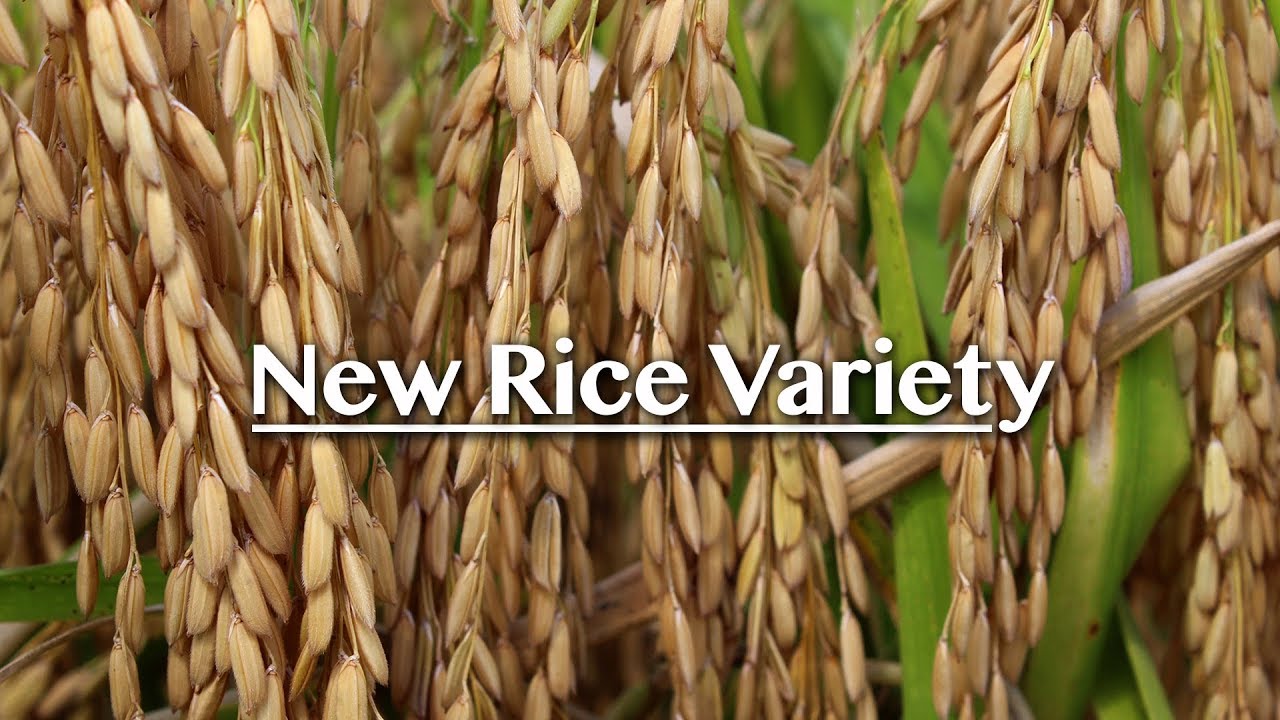General
FG Releases New Rice Variety to Ensure Food Sufficiency

By Adedapo Adesanya
The federal government has released a new rice variety known as FARO68 and 20 other crop varieties for farmers as part of efforts to make Nigeria attain food sufficiency.
Speaking on Thursday, Mr Oladosu Awoyemi, the Chairman of the National Varieties Release Committee (NVRC), at the 31st Meeting of the National Committee on Naming, Registration, and Release of Crop Varieties, Livestock Breed/Fisheries, revealed that the varieties were released to the farmers through his committee.
At the meeting attended by many agriculture experts, researchers, breeders, seed companies, and other relevant stakeholders, Mr Awoyemi said that a total of 25 crop varieties were submitted for registration, but 21 were approved and subsequently released.
He explained that the new rice variety was bred by the National Cereal Research Institute, Badeggi in Niger State.
According to him, the lowland rice genotype is registered and released based on its early maturity and high grain yield.
“Other released crop varieties include – three new millet varieties with high iron and zinc content; high grain yield, and presence of long bristles on the panicle, namely LCIC MV5; LCIC MV6, and LCIC MV7.
“Yam variety: UMUDa35-Delight; UMUDr33-Blessing and UMUDr34-Sunshine. These yam varieties were released based on high yield, good boiling, and pounding qualities.
“Six hybrid maize varieties, namely VSL 2201; PAC 740; SAMMAZ 69; SC 424; SC 555 and Oba Super 8.
“These new maize varieties were released based on high grain yield, tolerance to fall armyworm, to major foliar diseases, to multiple stresses, to Striga, drought and low nitrogen,” Mr Awoyemi said.
The NVRC chairman also announced the release of three new Sorghum varieties, namely SORGHUM 52; SORGHUM 53, and SORGHUM 54.
Mr Awoyemi said that the Sorghum varieties were released because of high yield and biomass, earliness, high Iron (fe) content and dwarfness and their tolerance to Striga.
Five tomato varieties were also released during the meeting; these were HORTITOM 1; HORTITOM 2, HORTITOM 3; PS TOM 1, and PS TOM 2.
According to him, the committee released the tomato varieties based on their “tolerance to fusarium wilt, Meloidogyne incognita; they contain good nutritional qualities and resistance to early blight”.
He said the varieties released were per with what was released in the US, Kenya, and other agricultural countries, adding that the exercise would make the agriculture sector not become stagnant.
Mr Awoyemi, who has been chairman of NVRC since 1991, used the opportunity of the meeting to announce his resignation from the committee due to old age.
The veteran urged agriculture stakeholders to continue to be dedicated to the development of Nigeria, “particularly in Agriculture, being the backbone of the nation’s economy.
“So, the frontiers of knowledge must continue to expand so that we come abreast with the developed world.”
In his remarks, Mr Abdullahi Mustapha, the Director-General of the National Biotechnology Development Agency (NABDA), said that release of the 21 crop varieties would contribute immensely to the development of crop sections for the overall development of the farming system in the country.
According to Mustapha, these new crop varieties, when farmers plant the seeds, will give them high and quality yields, resistance to diseases and drought, and free of other constraints. He encouraged farmers to ensure that they get the right seeds for planting.
General
KWAM 1 Ends Awujale Ambition, Withdraws Legal Challenge

By Adedapo Adesanya
Fuji musician, Mr Wasiu Ayinde, popularly known as K1 De Ultimate or KWAM 1, has formally withdrawn from the race for the Awujale of Ijebuland after staunch opposition to his ambitions.
This came as the minstrel filed a notice of discontinuation at the Ogun State High Court to end his legal challenge against the ongoing selection process.
The notice, filed on Monday, December 22, 2025, by his legal team led by Mr Wahab Shittu (SAN), brings to a close his controversial bid for the revered throne.
The withdrawal followed a ruling by Justice A. A. Omoniyi of High Court 3, Ijebu-Ode Judicial Division, who dismissed KWAM 1’s application for an interim injunction seeking to restrain the Ogun State Governor, Mr Dapo Abiodun, the Fusengbuwa Ruling House and other parties from proceeding with the selection of a new Awujale.
Justice Omoniyi held that the application lacked merit but ruled that the substantive suit could proceed on its merits, fixing January 14, 2026, for further hearing.
KWAM 1, the Olori Omooba of Ijebuland from the Fidipote Ruling House, had approached the court after the Fusengbuwa Ruling House declared him ineligible to contest for the stool, insisting he was not a bona fide member of the ruling house and therefore could not vie for the throne under its platform.
However, with the filing of the notice of discontinuation, KWAM 1 appears to have formally recused himself from the Awujale selection process, effectively ending his challenge.
He joined as respondents in the case: the Ogun State Governor, the Commissioner for Local Government and Chieftaincy Affairs, the Attorney General and Commissioner for Justice, the Secretary of Ijebu-Ode Local Government, the Chairman of the Awujale Interregnum Administrative Council, and the Chairman of the Fusengbuwa Ruling House.
In the application, KWAM 1 contended that he is a bonafide member of both the Fusengbuwa and Fidipote ruling houses, and that his rights as a potential candidate were being threatened by what he described as a flawed and unlawful process.
He alleged that the Awujale Interregnum Administrative Council, which he described as an “unrecognised body”, was exerting influence over the nomination procedure in violation of Ogun State chieftaincy laws.
Central to his claim was the argument that due process was not followed, particularly the requirement that the Ijebu-Ode Local Government formally publish the names of the 13 recognised kingmakers before any selection exercise commences.
KWAM 1 maintained that the failure to comply with this step rendered the process vulnerable to legal challenge.
The suit was filed against the backdrop of the vacancy created by the death of Oba Sikiru Kayode Adetona in July, at the age of 91, after a reign of more than six decades.
General
Dangote Unveils Phone Number to Report MRS Stations Selling PMS Above N739

By Modupe Gbadeyanka
A hotline number, 0800 123 5264, for Nigerians to report any MRS Oil Nigeria Plc filling stations selling Premium Motor Spirit (PMS), commonly known as petrol, above the approved pump price of N739 per litre, has been released by Dangote Petroleum Refinery.
The private refiner said the number was now active nationwide, enabling consumers to promptly report violations and help maintain fair pricing across over 2,000 MRS stations.
This measure follows the refinery’s recent commencement of nationwide PMS sales at N739 per litre—a strategic intervention aimed at stabilising fuel prices and easing the financial burden on Nigerians during the festive season.
“We encourage Nigerians to avoid purchasing PMS at inflated prices when locally refined fuel is available at N739 per litre.
“Report any MRS station selling above this price by calling our hotline. Together, we can ensure that the benefits of this price reduction reach every consumer,” the company stated in a statement.
The organisation stressed its mission to deliver affordable, high-quality fuel while safeguarding national economic interests, reaffirming its commitment to steady supply, backed by a guaranteed daily output of 50 million litres, and warned against attempts to create artificial scarcity or manipulate supply.
Regulatory authorities have been urged to remain vigilant and take decisive action against unpatriotic practices.
By refining locally at scale, Dangote Refinery is reducing Nigeria’s dependence on imports, conserving foreign exchange, stabilising the Naira, and strengthening energy security. This initiative represents a significant milestone in the country’s journey toward sustainable energy solutions and economic recovery.
The refinery also issued a stern warning against attempts by unscrupulous operators to create artificial scarcity in response to the price reduction, calling on government agencies to act decisively.
“Any attempt to create artificial scarcity or manipulate supply to frustrate recent price reductions is unpatriotic and unacceptable. We urge regulatory authorities to remain vigilant and take firm action against such practices, especially during this critical festive period,” the statement added.
Consumers were advised to resist purchasing fuel at inflated prices when cheaper, high-quality alternatives are readily available.
General
ANLCA Airport Chapter Scores Salamatu High on Stakeholder Engagement, Trade Facilitation

By Bon Peters
The Airport Chapter of the Association of Nigerian Licensed Customs Agents (ANLCA) at Omagwa Rivers State has praised the Customs Area Controller for Customs Area 1 Command, Comptroller Salamatu Atuluku.
At the end-of-the-year party attended by stakeholders, including the leader of the association’s chapter, Mr Charles Onyema, said the customs officer has done well in stakeholder engagement and trade facilitation.
At the event held last Friday, he said his association has been enjoying a very cordial relationship with other organisation in the ecosystem.
“You can see what is happening today, everybody is working together and our operations here are seamless,” he noted.
He stated that apart from creating a very robust business environment for his members and other stakeholders to operate, he has taken a decision to build and commission a befitting ANLCA Secretariat which would be completed soon and be commissioned by the ANLCA national president, Mr Emenike Nwokeoji.
The ANLCA chapter chief said since “Comptroller Salamatu Atuluku assumed office at Customs Area 1, Port Harcourt Command, it has been a different ball game, facilitating trade and increasing Revenue generation.”
“I remember I told her she was a mother during her maiden visit to the airport.
“You know when you have a woman in charge of an affair, food will not lack, compassion will not lack and motherly love will not lack.
“She is very wonderful in stakeholder engagement, revenue generation and trade facilitation,” Mr Onyema enthused.
Projecting into the future, Mr. Onyema said the year 2026 would be better for his members, adding that he has advised them on financial discipline which he said would help them during the trying period.
-

 Feature/OPED6 years ago
Feature/OPED6 years agoDavos was Different this year
-
Travel/Tourism9 years ago
Lagos Seals Western Lodge Hotel In Ikorodu
-

 Showbiz3 years ago
Showbiz3 years agoEstranged Lover Releases Videos of Empress Njamah Bathing
-

 Banking8 years ago
Banking8 years agoSort Codes of GTBank Branches in Nigeria
-

 Economy3 years ago
Economy3 years agoSubsidy Removal: CNG at N130 Per Litre Cheaper Than Petrol—IPMAN
-

 Banking3 years ago
Banking3 years agoFirst Bank Announces Planned Downtime
-

 Banking3 years ago
Banking3 years agoSort Codes of UBA Branches in Nigeria
-

 Sports3 years ago
Sports3 years agoHighest Paid Nigerian Footballer – How Much Do Nigerian Footballers Earn
















